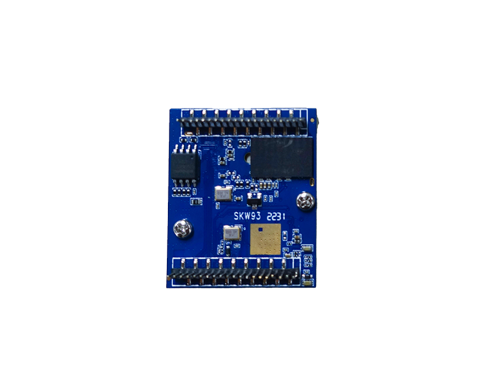In today's digital era, high-speed, stable, and clear video transmission has become an indispensable part of our lives and work. To this end, we have launched the SKW93A high-definition video transmission 5GHz WiFi module, which has a faster transmission rate, smaller size, supports dual frequency transmission, and can work simultaneously in both 2.4GHz and 5GHz frequency bands. You can choose the most suitable frequency band according to actual needs in different environments and scenarios, in order to achieve the best video transmission effect.

On the 5GHz frequency band, our module can provide a transmission speed of up to 733Mbps, which means you can smoothly transmit high-definition video, even 4K ultra high definition video, without worrying about lag or delay. At the same time, the 5GHz frequency band also has lower interference and higher stability, which can bring you a clearer and more stable video experience.
In addition to high-speed and stable transmission performance, our 5GHz WiFi module also has excellent compatibility and ease of use. It is compatible with various devices and platforms, including smartphones, tablets, laptops, smart TVs, etc., allowing you to easily transfer and share videos between different devices.
◆ Frequency: 2.4/5.8GHz
◆ Small size: 36.4mm (length) x 30.5mm (width) x 14.8mm (height) Dual chip: MT7628A, MT7610E
◆ Dual band: AC AP/Router
◆ Compliant with IEEE 802.11a/b/g/n/ac DDR2 memory up to 1024Mb
◆ Flash memory up to 256Mb
◆ 2 LAN ports and 1 WAN port
◆ Supports USB 2.0 slave devices, suitable for USB disks, USB 3G/4G dongles, and USB cameras
◆ Support interfaces: I2C, SDIO, I2S (192K/24bits), PWM, UART lite, GPIO
◆ Security: WEP64/128, TKIP, AES, WPA, WPA2, WAPI
1. Improving performance: Through division of labor and collaboration, one chip focuses on the wireless communication part while the other chip handles other functions, which can improve overall data processing and transmission performance.
2. Enhanced functional diversity: Different chips can be responsible for different tasks, such as one for WiFi connection and data transmission, and the other for encryption, security processing, or implementation of specific application functions, thereby increasing the functional richness of the module.
3. Improving stability: A dual chip architecture can better cope with complex working conditions. When one chip fails or is interfered with, the other chip can still maintain basic functions to a certain extent, improving system reliability and stability.
4. Meeting specific needs: For example, in some application scenarios that require high real-time performance, low power consumption, etc., better characteristics can be achieved through the combination of different chips to meet specific needs.
Prev:What are ultra wideband UWB antennas and what are the main types of UWB antennas
Next:How does the GPS module of SPI interface achieve positioning
Copyrights© Shenzhen Skylab Co.,LTD All Rights Reserved.

